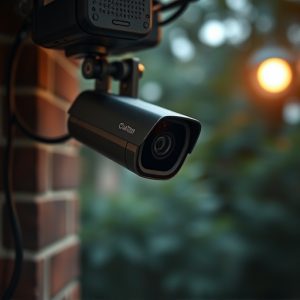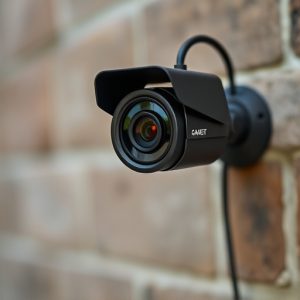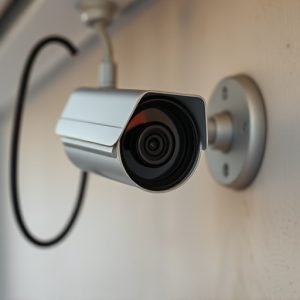Hidden Camera with Audio Technology: A Comprehensive Guide to Usage, Applications, and Legal Considerations
Hidden cameras with audio have revolutionized surveillance technology, offering high-fidelity audio …….
Hidden cameras with audio have revolutionized surveillance technology, offering high-fidelity audio recording alongside crystal-clear video capabilities. These compact devices are now essential for capturing detailed and accurate audiovisual data across various fields, from home security to professional monitoring and research. With motion detection, remote access, and enhanced battery life, these cameras can record unscripted events covertly in high resolution, with clear sound clarity and noise filtering capabilities. They are indispensable for long-term observation tasks and have become a critical tool for ensuring safety and accountability. In selecting a hidden camera with audio, it's important to consider the device's video resolution, microphone quality, storage options, environmental adaptability, and legal and ethical implications of their use. These cameras must be employed within the confines of privacy laws that dictate consent and legality of recordings, ensuring ethical surveillance practices are maintained.
Exploring the realm of covert surveillance, this article casts a spotlight on the integration of audio capabilities in hidden cameras. Delving into their design and functionality, we uncover how these stealthy devices have become indispensable tools for security and surveillance. From monitoring home environments to ensuring business integrity, their applications are vast and impactful. We will guide you through selecting the optimal device by highlighting essential features and considerations. Furthermore, we address the critical legal and ethical aspects of employing such technology, ensuring users navigate these devices responsibly. Join us as we dissect the intricacies and implications of hidden cameras with audio in today’s surveillance landscape.
Unveiling the Stealthy Sentinels: Hidden Camera with Audio Technology
Hidden camera technology has advanced significantly, offering a level of stealth and surveillance that was once relegated to the realm of espionage fiction. These devices, often referred to as spy cameras with audio capabilities, have become increasingly sophisticated, providing users with the ability to monitor environments discreetly while capturing sound for an immersive experience. The integration of microphones with these tiny cams enables them to record high-quality audio alongside sharp video footage. This dual functionality is invaluable in a variety of applications, from home security to professional surveillance and covert field research.
The design of hidden cameras with audio now typically includes features such as motion detection, which activates the camera and microphone upon sensing movement. This feature is particularly useful for capturing spontaneous events or for ensuring that the device remains undetected while still operational. Additionally, many of these devices are equipped with remote access capabilities, allowing users to view and listen to live feeds from a smartphone or computer. With advancements in battery technology, some models can operate for extended periods without the need for recharging or changing batteries, making them an ideal solution for long-term surveillance tasks. The combination of high-resolution video and clear audio recording capabilities in a compact, inconspicuous package makes hidden camera with audio systems an indispensable tool for those requiring a covert monitoring solution.
The Anatomy of Audio-Enabled Hidden Cameras: Design and Functionality
Hidden cameras with audio capabilities represent a sophisticated blend of surveillance and acoustic technology, designed to discreetly monitor environments while capturing sound. These devices typically feature miniaturized microphones that are capable of picking up a wide range of audible frequencies, ensuring that conversations or ambient sounds can be clearly recorded alongside video footage. The design of these cameras prioritizes compactness and concealment; they are often no larger than a common household item, such as a smoke detector, wall clock, or even a USB charger, allowing them to blend seamlessly into their surroundings.
In terms of functionality, audio-enabled hidden cameras offer high-quality sound recording that can be synchronized with the video feed. They are equipped with advanced digital signal processors that filter out background noise and enhance voice clarity, providing crisp and intelligible audio. Additionally, many of these devices come with built-in memory storage or support for external storage solutions like SD cards or cloud services. This allows for extended operation without the need for constant connectivity. Furthermore, they often include features such as motion activation, which triggers both video and audio recording when movement is detected, ensuring that users are alerted to significant events within the monitored area. The integration of both visual and auditory surveillance capabilities in a single device offers a comprehensive solution for security applications in both residential and commercial settings.
Applications of Hidden Cameras with Audio Recording: From Security to Surveillance
Hidden cameras with audio recording capabilities have become invaluable tools across various sectors, transcending the realm of traditional security systems. In the context of personal safety, these devices offer a discreet means to monitor and record interactions, providing irrefutable evidence in case of disputes. Homeowners can safeguard their property with devices that blend seamlessly into everyday objects, capturing any unauthorized entry or suspicious activity while preserving audio for clarity. The workplace also benefits from such technology; businesses can ensure compliance with regulations by recording health and safety protocols, employee training sessions, and interactions with clients to maintain accountability and transparency.
Beyond personal and professional security, hidden cameras with audio have significant applications in the field of surveillance, both for public safety and investigative purposes. Law enforcement agencies utilize these devices to gather evidence that is both visual and auditory, aiding in crime prevention and detection. In addition to securing physical locations, these tools are essential in monitoring wildlife or environmental conditions in remote areas, providing critical data for conservation efforts. The versatility of hidden cameras with audio extends to the realm of academic research, where they can be used to study human behavior or record experiments in a manner that is unobtrusive and less intrusive compared to traditional recording methods. This technology’s ability to capture both visual and auditory information ensures that users have a comprehensive understanding of the events being recorded, making it an indispensable resource for a multitude of applications.
Selecting the Ideal Hidden Camera with Audio: Key Features and Considerations
When selecting a hidden camera with audio capabilities, it’s crucial to consider the environment where it will be utilized and the specific features that align with your surveillance needs. A compact device with high-resolution video and crystal-clear audio recording is essential for capturing detailed footage. The resolution of both the video and audio should be prioritized; a camera with at least 1080p video resolution and a built-in microphone capable of picking up clear, audible sound will ensure that you capture events as they unfold without missing a detail. Additionally, the device should offer reliable recording times, and if possible, motion-activated recording to conserve battery life or storage space.
Another important aspect is the camera’s ability to store recordings securely. Look for models with local storage via an SD card or those that offer cloud storage solutions. For enhanced security, some hidden cameras with audio come with night vision capabilities, enabling them to operate effectively in low-light conditions. Moreover, features such as two-way audio can be particularly useful, allowing users to communicate through the device and potentially deter unwanted activity. Ensure the camera you choose blends seamlessly into its surroundings; discreet models often resemble everyday objects like clocks, smoke detectors, or security cameras, making them less conspicuous to potential intruders. Always verify compatibility with your intended devices for playback and review, and consider the ease of use when setting up and accessing the recordings, as this will vary between models.
Legal Implications and Ethical Use of Hidden Cameras with Audio Capture
Hidden cameras with audio capabilities have become increasingly sophisticated, raising both legal and ethical questions that must be carefully considered. From a legal standpoint, the use of such devices is subject to a myriad of laws that vary by jurisdiction. In many regions, it is illegal to record conversations without the explicit consent of all parties involved, as this may infringe upon privacy rights and potentially violate wiretapping statutes. These laws are designed to protect individuals from unwarranted surveillance and invasion of privacy. It is crucial for users to understand that the legality of recording with hidden cameras hinges on the context in which they are used; for instance, in a private setting where all parties are aware they are being recorded, the use may be compliant with the law. However, covertly recording individuals in places where they have a reasonable expectation of privacy, such as their home or a private conversation, can lead to legal repercussions and ethical dilemmas.
The ethical implications of using hidden cameras with audio are equally significant. Ethics dictate that individuals should be aware their actions and words are being captured, allowing them the opportunity to consent or object to such recording. The covert nature of these devices can lead to moral quandaries, particularly when the recordings might be used for surveillance, monitoring, or as evidence in legal proceedings. It is imperative that users navigate this complex terrain with a strong commitment to ethical practices, ensuring that their use aligns with societal norms and respects human dignity. The deployment of hidden camera audio technology should always be guided by principles of transparency, consent, and respect for personal boundaries.


